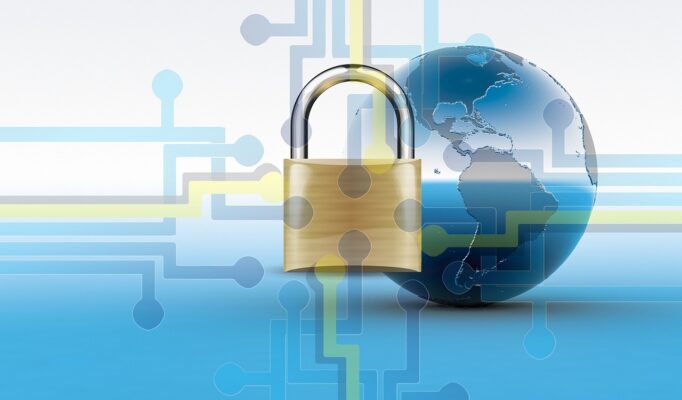Cybersecurity in Educational Environments: Digital Security
In the digital age, cybersecurity has become a critical concern across various sectors, and education is no exception. With the increasing reliance on technology for teaching, learning, and administration, educational institutions are becoming more attractive targets for cyber threats. This article delves into the importance of cybersecurity in educational environments, the challenges faced, and strategies to ensure digital security.
The Importance of Cybersecurity in Education
Cybersecurity in educational environments is vital for protecting sensitive information and ensuring the smooth operation of academic institutions. As schools and universities adopt digital tools and online platforms, they must safeguard their systems against a growing array of cyber threats.
- Protecting Sensitive Data: Educational institutions handle a wealth of personal and academic information, including student records, financial data, and faculty information. Ensuring this data is secure from unauthorized access is crucial to maintaining privacy and trust.
- Maintaining Operational Continuity: Cyberattacks, such as ransomware, can disrupt the day-to-day operations of educational institutions, leading to significant downtime and loss of productivity. Effective cybersecurity measures help prevent such disruptions and ensure that educational activities continue without interruption.
- Safeguarding Intellectual Property: Educational institutions often conduct research and develop valuable intellectual property. Protecting this information from theft or unauthorized access is essential to maintaining the integrity and reputation of academic work.
- Ensuring Safe Learning Environments: As more educational activities move online, creating a safe and secure digital learning environment is crucial. This includes protecting students from cyberbullying, online harassment, and exposure to inappropriate content.
Challenges in Cybersecurity for Education
Educational institutions face several challenges when it comes to cybersecurity:
- Limited Resources: Many schools and universities operate with constrained budgets and may lack the financial resources to invest in advanced cybersecurity measures. This can make it difficult to implement and maintain comprehensive security protocols.
- Complex IT Environments: Educational institutions often have diverse and complex IT environments, including various hardware, software, and networks. Managing and securing these diverse systems can be challenging and resource-intensive.
- Human Factors: Cybersecurity is not solely a technical issue; human factors play a significant role. Students, faculty, and staff may inadvertently expose the institution to risks through actions such as weak password practices or falling for phishing scams.
- Evolving Threat Landscape: Cyber threats are constantly evolving, with new vulnerabilities and attack methods emerging regularly. Keeping up with these changes and adapting security measures accordingly requires ongoing vigilance and expertise.
- Compliance and Regulations: Educational institutions must navigate various regulations and standards related to data protection and privacy, such as the Family Educational Rights and Privacy Act (FERPA) in the United States. Ensuring compliance with these regulations adds another layer of complexity to cybersecurity efforts.
Strategies for Enhancing Cybersecurity in Education
To address these challenges and enhance cybersecurity, educational institutions can adopt several strategies:
- Implement Comprehensive Security Policies: Establishing and enforcing clear cybersecurity policies is essential. These policies should cover areas such as password management, data protection, and acceptable use of technology.
- Invest in Security Training: Providing regular cybersecurity training for students, faculty, and staff helps raise awareness about potential threats and best practices for avoiding them. Training should cover topics such as recognizing phishing attempts, safe internet use, and reporting suspicious activity.
- Adopt Multi-Factor Authentication: Multi-factor authentication (MFA) adds an extra layer of security by requiring users to provide multiple forms of verification before accessing systems. Implementing MFA can significantly reduce the risk of unauthorized access.
- Regularly Update and Patch Systems: Keeping software, hardware, and systems up to date with the latest patches and updates helps protect against known vulnerabilities. Regularly updating systems is a fundamental aspect of maintaining cybersecurity.
- Backup Critical Data: Regularly backing up important data ensures that it can be recovered in the event of a cyberattack or system failure. Backups should be stored securely and tested periodically to ensure their integrity.
- Monitor and Respond to Threats: Implementing real-time monitoring and threat detection systems helps identify and respond to potential security incidents promptly. Having a well-defined incident response plan in place is crucial for managing and mitigating the impact of cyberattacks.
- Collaborate with External Experts: Partnering with cybersecurity experts and organizations can provide valuable insights and support. External experts can offer guidance on best practices, conduct security assessments, and help with incident response.
The Future of Cybersecurity in Education
As technology continues to advance, the importance of cybersecurity in education will only grow. Future developments in digital security may include:
- Enhanced Threat Detection: Advances in artificial intelligence and machine learning could improve threat detection and response capabilities, allowing institutions to identify and mitigate risks more effectively.
- Improved Security Solutions: Ongoing research and development in cybersecurity solutions will lead to more robust and user-friendly security tools, making it easier for educational institutions to protect their digital assets.
- Increased Collaboration: Collaboration between educational institutions, cybersecurity organizations, and government agencies will be essential for sharing threat intelligence and developing effective security strategies.
- Focus on Privacy: As privacy concerns continue to grow, there will be an increased emphasis on protecting personal data and ensuring compliance with evolving data protection regulations.
Conclusion
Cybersecurity is a critical aspect of modern education, essential for protecting sensitive information, maintaining operational continuity, and ensuring a safe learning environment. By addressing challenges and implementing effective security strategies, educational institutions can safeguard their digital assets and provide a secure and reliable educational experience. As technology evolves, staying ahead of emerging threats and adopting innovative security solutions will be key to maintaining digital security in educational environments.





